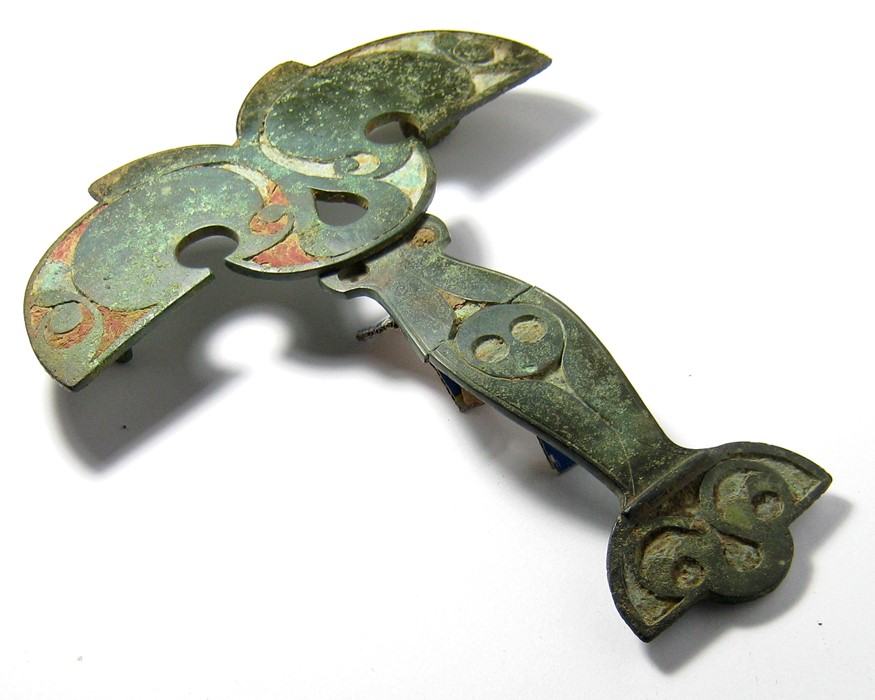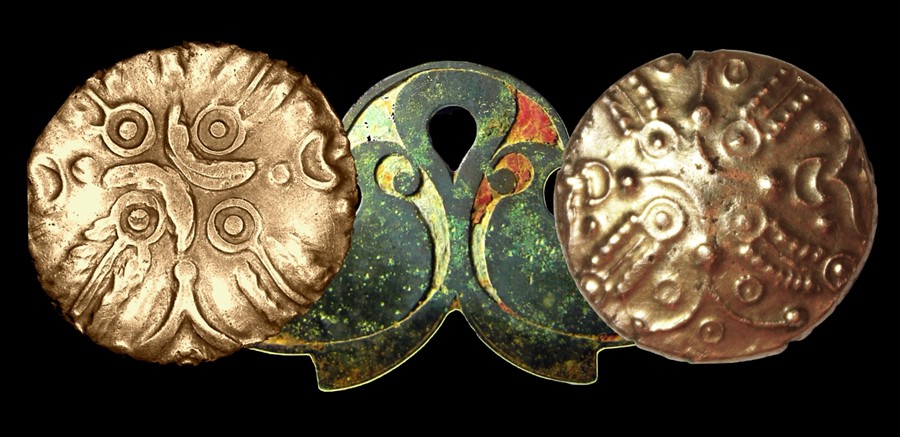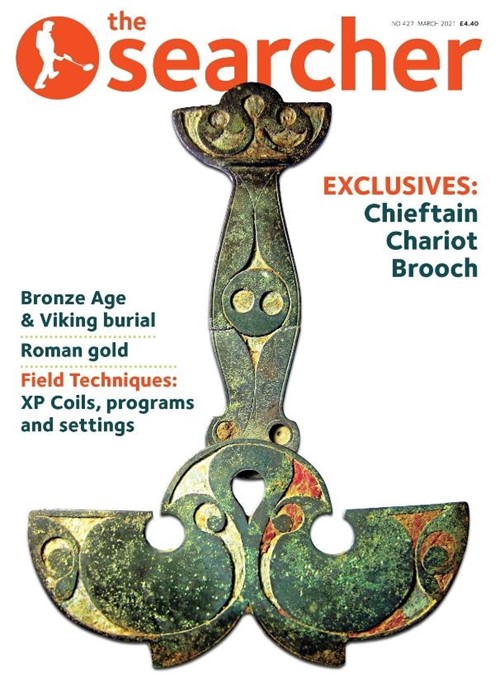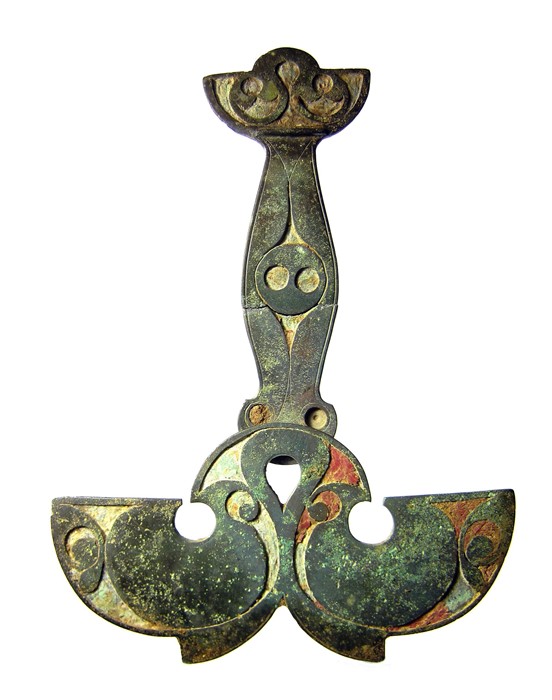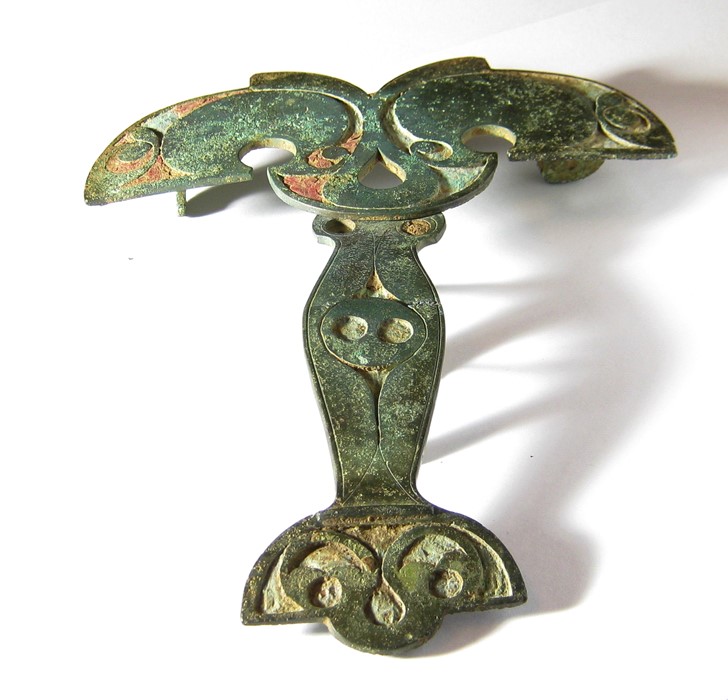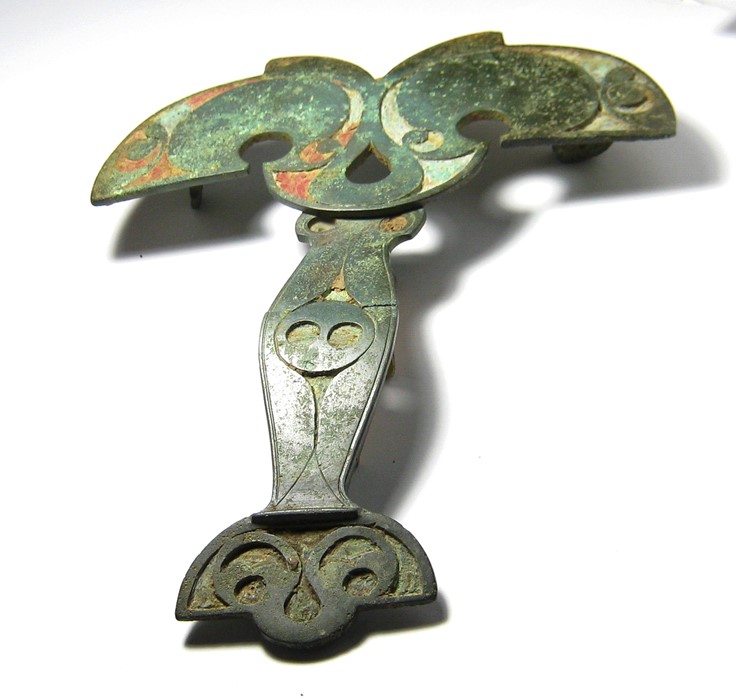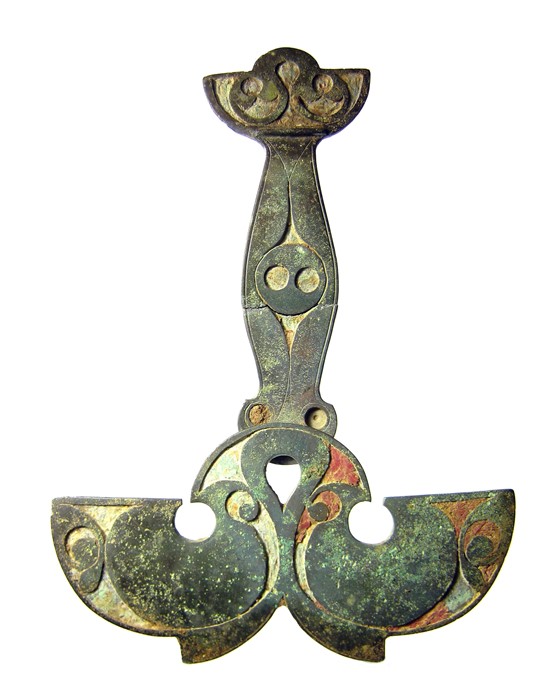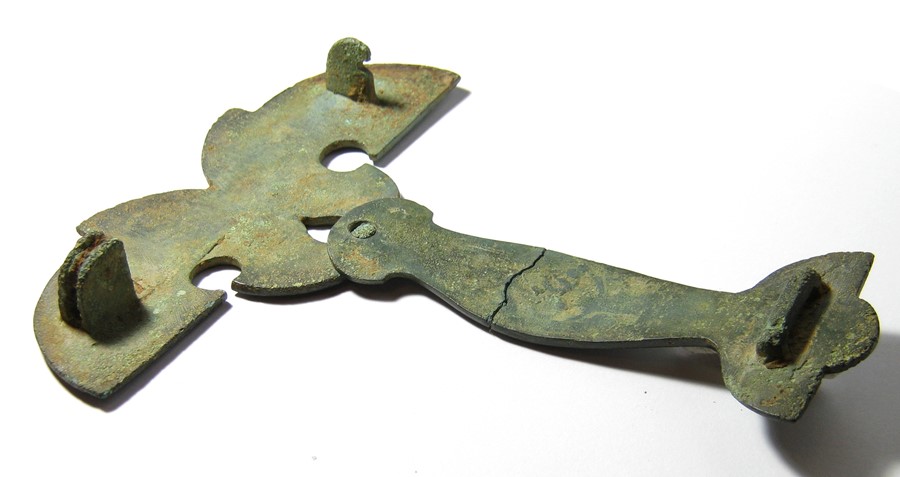1
Celtic Harness Brooch. This amazing piece of Ancient British horse furniture dates back to the mid
Historica, Coins, Banknotes & Antiquities. 2 day Auction. - Webcast Only. Collection By Appointment
Sale Date(s)
Venue Address
General delivery information available from the auctioneer
Hansons Auctioneers offers an in-house postal service for clients who are unable to attend the auction or collect.
contact postage@hansonsauctioneers.co.uk
If items need to be sent abroad we shall assess these on an individual basis. Depending on the object and worth/size of parcel, Hansons will recommend using one of our couriers if we are unable to post your item in-house. We reserve the rights not to post items abroad if we deem unfit and think it will break.
We are not professional packers or shippers but do our utmost to pack items in a correct way which will ensure items arrive safely. However, Hansons Auctioneers will not be held responsible for making any claim. We may be able to make claims with Royal Mail or Parcelforce but cannot guarantee this.
There are some items that, due to their nature, size or weight, we cannot post out. However, we can recommend couriers and you can arrange for them to pick the item up from our saleroom/ London Office. They will also be able to insure some items which we are unable to insure.
RECOMMENDED COURIERS:
Mailboxes
Hansons Derby: Mailboxes Nottingham:www.mbe.co.uk/nottingham +44(0)1159 472 779
Hansons London: Mailboxes Kingston: www.mbe.co.uk/kingston +44 (0) 20 8547 1547
Advance Forwarding +44 (0)1332 865 656 www.advanceforwarding.co.uk
IJK Couriers (Contact Ian Kent) 07917500522 www.ijkcouriers.co.uk
London Clients:
Auction Logistics (Mailboxes) 0871 221 1233 auctionlogisticsenquiries@mbe.uk (internet buyers can request direct delivery from their Saleroom.com account)
For a complete guide to our postage capabilities please view our postage pages on our website:
https://hansonsauctioneers.co.uk/page/postage
Important Information
IMPORTANT INFORMATION -
Day 1 from lot 1
Da2 2 from lot 1001
sale manager William whayward@hansonsauctioneers.co.uk
THE SALEROOM IS CURRENTLY CLOSED AND WE ARE NOT OFFERING PUBLIC VIEWING.
PAYMENT IS BY BANK TRANSFER AND CARD PAYMENT VIA WORLDPAY. (NO PAYMENT OPTIONS ARE AVAILABLE ON LOCATION)
COLLECTION IS BY SAFE SOCIAL DISTANCING RULEs AND BY APPOINTMENT ONLY AFTER PAYMENT HAS BEEN MADE
WORLDWIDE POSTAGE IS AVAILABLE ON MOST ITEMS. PLEASE CONTACT OUR POSTAGE TEAM. postage@hansonsauctioneers.co.uk
Buyers Premium is 25%.(+vat)
Internet surcharges - .Charges vary with each bidding platform. Please check each sale before proceeding to bid. Information available at hansonsauctioneers.co.uk
Minimum Lot Charge £6(+vat)
Payment of items and Storage Charges
Timely collection of items is imperative as storage space is limited.
Furniture: Lots must be paid for and collected within 3 days after the furniture sale, items remaining after this timescale will incur a storage fee of £50 +VAT per week.
General items: must be paid for and collected within 5 working days of the end of the sale, after that storage charges will apply which will vary between £10-£20 + VAT per week dependent upon volume of items/space required to store.
Hansons advises that the auctioneer will commence and advance bidding at levels and increments he considers appropriate and is entitled to place a bid or series of bids on behalf of the Seller up to the reserve on the lot, without indicating he is doing so and whether or not other bids are placed.
Terms & Conditions
Terms and Conditions of Business for Buyers
Care is taken to ensure that any statements as to authorship, attribution, origin, date, age, provenance and condition are reliable and accurate, but all such statements are statements of opinion and are not to be taken as statements or representations of fact. Hansons reserve the right, in forming their opinion, to consult and rely upon any expert or authority reasonably considered by them to be reliable. All clients are advised they are entering into a contract with Hansons Auctioneers and Valuers under English Law and Jurisdiction.
1. The Buyer
The highest bidder to be the buyer. If any dispute arises, the auctioneer shall have absolute discretion to settle it and to put any disputed lot up again for sale.
2. Buyer Identification
Buyers are requested to furnish references in advance of the sale in order to avoid delay in clearing purchases. Goods will not be cleared until such references have been processed or cheques cleared. Hanson’s reserve the right not to approve any online bidder when their registration credit check is not successful and who cannot provide references. Hansons will not accept commission bids for any buyer that has an outstanding invoice.
3. Buyer’s Premium
The buyer shall pay the hammer price together with a buyer’s premium at the rate of 25% plus VAT. Please note that there is a minimum purchase charge of £6 plus VAT. Internet bidding incurs additional surcharges subject to platform. Please make yourself aware of charges before proceeding to bid.
VAT is charged on Hanson’s services NOT on the goods and is payable at the standard rate set by the UK government.
Any royalties eligible to be paid to a qualifying artist under the ‘Droit de Suite’ legislation will be added to the buyers invoice
4. Payment
Immediately on the fall of the hammer, all lots shall be at the sole risk and expense of the respective purchasers
All buyers you will be sent a payment request where possible via email, telephone payments are no longer accepted. A bank payment or payment in person are accepted alternatives.
All Bidders need to pay and arrange collection of smalls within 5 working days of the auction.Furniture buyers need to pay and collect within 3 working days of its sale day.
Failure to pay for goods within 15 working days of the auction may result in the sale being rescinded. The defaulting buyer will also be blocked from bidding at future Hansons auctions.
Methods of Payment
Bank Transfer or Card Payment by Worldpay.
Personal cheques will only be accepted at the discretion of Hanson’s Accounts and on the understanding that NO goods will be released until bank clearance of the cheque has completed.
6. Collection / Shipment of Goods
All small goods must be paid for and collected within 5 working days following sale. Furniture must be paid for and collected within 3 working days. If after the alloted time the item has not been collected then a storage charge will apply, the item will also no longer be insured. Hansons shall then contact the buyer in writing to confirm that this additional charge is now in place and further to that if paid for item(s) are still not collected within another 3 weeks of the date on the letter, the items will be placed back into the next auction without reserve with the buyer becoming the vendor. All Hansons terms and conditions will now apply to the new vendor of this item. A cheque will be sent out 20 working days after the sale, this will be minus our saleroom and storage charges.
7. Postal Service
Hansons Auctioneers do offer a postal service for clients within the UK who are not able to attend the auction or unable to collect. We are not professional packers or shippers, though we will try our best to pack items in a correct way which will ensure items arrive safely. However Hansons Auctioneers do not insure items posted and therefore will not be held responsible for making any claim for damage. There are some items that due to their nature, size or weight we cannot post out, but we can recommend couriers who you can arrange to pick the item up from our saleroom. They may also be able to insure some items which we are unable to insure. For full details see ‘Postage of items’ under ‘Our Services’ on the Hansons website.
8. All buyers / couriers must check their purchases prior to departure from the auction. Hansons will accept no claims for loss or damage thereafter.
9. Third Party Liability
Every person at Hansons Auctions shall be deemed to be there at his own risk. They shall have no claim against Hansons in respect to any accident which may occur or injury, damage or loss howsoever caused.
10. Rights of Admission
The right is reserved to refuse admission to the auction premises and may be used by Hansons without giving a reason.
11. Selling Rate
Lots are sold at approximately 80 lots per hour in webcast only sales.

















